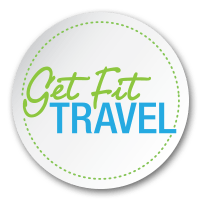Before starting any type of new exercise program, nothing is more important than a visit to your doctor. Any type of existing injury whether it is back, joint ligament, ankle, foot, etc. will greatly impact your training routine and results. Also it is the best way to keep you safe from injury.
Warm ups are used to prepare the body for physical activity. To stretch your muscles, prepare your joints and warm you up.
Warm up Don’ts
Don’t skip the warm up, (Obviously).
Don’t do 20mins of cardio as a warm up. Remember, the more you burn during a warm up, the less you have during the actual work out.
Don’t limit your warm up to stationary stretches. Many associate this kind of stretching to the beginning of your work out but this is better use post work out during the cool down.
Don’t rush it! Read your own body. If you feel uncomfortable find a more comfortable pace. Use your own comfort zone don’t think you have to keep up with everybody else. Everybody is different with different levels of fitness, remember that.
Usual warm up activities are:
- Jumping Jacks (Star Jumps)
- Squats
- Jumps
- Planks with arm raises (On or off your knees. Whatever makes you more comfortable)
- Knee Highs
Preventing Injury
Warming up is a must, it has to be done. However, it may not be enough to eliminate the possibility of injury no matter the workout. Here are some additional tips for injury prevention.
Padded fitness mats: Working out on hard ground or floor stimulates your muscle fibers, however, it is important to have correct form while doing any type of exercise. The impact on your wrists while doing push ups or burpies for example can be extreme but if you change your hand position during pushups to allow a better level of comfort, you may very well cause yourself a shoulder injury, which will have out of commission for weeks; maybe months at a time. So using a ½ inch fitness mat will help reduce impact.
Work out gloves: Work out gloves with a small amount of padding will help with gripping, especially doing pull ups. Standard equipment while pounding your hands.
Movement Practice, or, Low Impact Resistance Training
It is important to incorporate movement practice into your new training routine. Movement Practice stretches and moves your shoulders, torso, arms, legs, shoulders etc, within their natural movements, increasing the motion without hurting the tissue. Think Yoga or Pilates. 15mins of movement practice before bed each night will prepare you for the next day’s activities.
Hips and Hamstrings
Vigorous workouts can put strain on your hips and hamstrings so a 15min yoga session on your “off days” will help lessen the discomfort
Shoulders
If you haven’t had a work out routine at this level before, it will be a great idea to do a 20min session on your off days. Moving your shoulders while applying a small amount of pressure can help keep strain at bay and reduce pain.
Lower Back
If your job involves sitting down for long periods of time, your lower back may be under a lot of pressure and your posture will be questionable. If you compensate for this during a work out you can do more harm than good. Movement practice will help improve posture and increase recovery as well.
Warm Down
Bring on those stationary stretches! 7 different stretches, all focusing on the lower body. Warm downs are used to lower your heart rate, stretch your muscles, open your groin area and cool you down.




